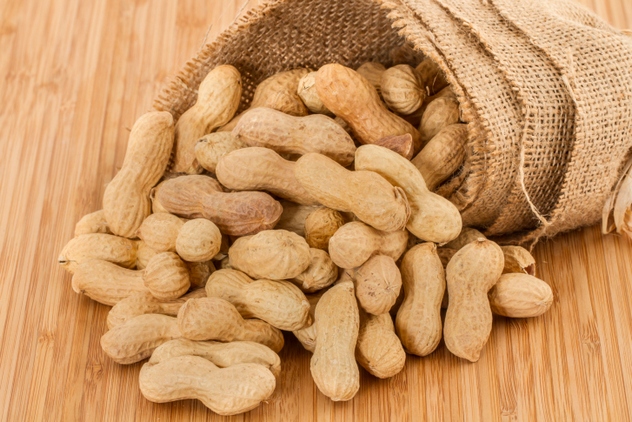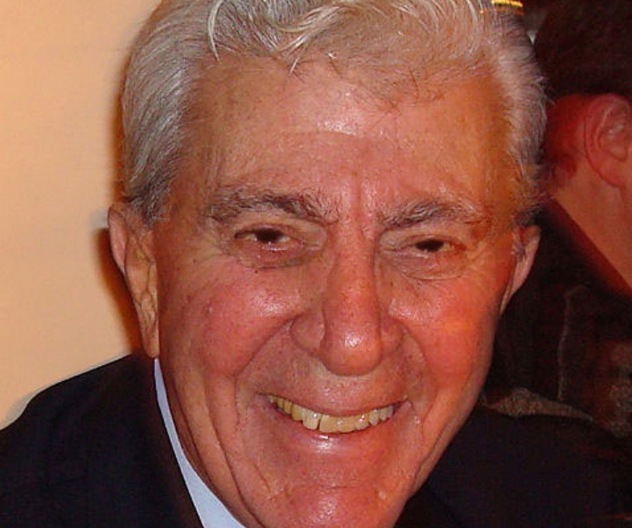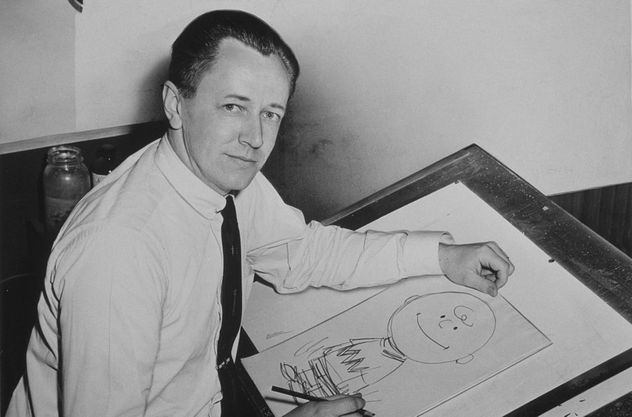 Our World
Our World  Our World
Our World  Pop Culture
Pop Culture 10 Incredible Female Comic Book Artists
 Crime
Crime 10 Terrifying Serial Killers from Centuries Ago
 Technology
Technology 10 Hilariously Over-Engineered Solutions to Simple Problems
 Miscellaneous
Miscellaneous 10 Ironic News Stories Straight out of an Alanis Morissette Song
 Politics
Politics 10 Lesser-Known Far-Right Groups of the 21st Century
 History
History Ten Revealing Facts about Daily Domestic Life in the Old West
 Weird Stuff
Weird Stuff 10 Everyday Products Surprisingly Made by Inmates
 Movies and TV
Movies and TV 10 Actors Dragged out of Retirement for One Key Role
 Creepy
Creepy 10 Lesser-Known Shapeshifter Legends from Around the World
 Our World
Our World 10 Science Facts That Will Change How You Look at the World
 Pop Culture
Pop Culture 10 Incredible Female Comic Book Artists
 Crime
Crime 10 Terrifying Serial Killers from Centuries Ago
Who's Behind Listverse?

Jamie Frater
Head Editor
Jamie founded Listverse due to an insatiable desire to share fascinating, obscure, and bizarre facts. He has been a guest speaker on numerous national radio and television stations and is a five time published author.
More About Us Technology
Technology 10 Hilariously Over-Engineered Solutions to Simple Problems
 Miscellaneous
Miscellaneous 10 Ironic News Stories Straight out of an Alanis Morissette Song
 Politics
Politics 10 Lesser-Known Far-Right Groups of the 21st Century
 History
History Ten Revealing Facts about Daily Domestic Life in the Old West
 Weird Stuff
Weird Stuff 10 Everyday Products Surprisingly Made by Inmates
 Movies and TV
Movies and TV 10 Actors Dragged out of Retirement for One Key Role
 Creepy
Creepy 10 Lesser-Known Shapeshifter Legends from Around the World
10 Obscure Facts About Charlie Brown And The ‘Peanuts’ Gang
The Peanuts comic strips and television specials have been an icon for generations of fans, and the tradition continues in 2015 with The Peanuts Movie. However, fans young and old may be surprised at how much they don’t know about these classic characters and the greatest character of them all: Peanuts creator Charles Schulz.
10Charles Schulz Hated The Name
 Peanuts has become a household name, gracing everything from comics to movies to lunchboxes and propelling creator Charles Schulz to fame. However, that didn’t keep Schulz from absolutely hating the name.
Peanuts has become a household name, gracing everything from comics to movies to lunchboxes and propelling creator Charles Schulz to fame. However, that didn’t keep Schulz from absolutely hating the name.
The comic strip was originally pitched to the United Features Syndicate under the simple name L’il Folks, but the executives were concerned that people might confuse the name with rival comic strip L’il Abner or an older strip named Little Folks. The name Peanuts was given to the strip by syndicate production manager Bill Anderson, presumably to evoke the idea of the “peanut gallery” from the highly popular Howdy Doody show.
Schulz hated this change from the moment it happened and spent his lifetime campaigning to change it to alternate titles, such as Good Ol’ Charlie Brown. Schulz was even quoted as hating the word itself, believing it to be “ridiculous” and without “dignity.” He was, of course, a victim of his own success: By the time the strip and cartoons had reached international popularity, there was no chance of the name being changed.
9CBS Hated The Christmas Special
For many families, the Peanuts cartoons have become holiday staples, with people of all ages enjoying features such as It’s The Great Pumpkin, Charlie Brown and A Charlie Brown Christmas. One entity, however, downright hated the Christmas special: its broadcaster, CBS.
By the time CBS executives turned a critical eye to the movie, it was already produced and—as its executive producer Lee Mendelson noted—it was too late for them to really change anything. Nonetheless, he said they objected to things such as the plethora of jazz music in a Christmas show and the overall slow pace of the movie. Because of this, Mendelson and others assumed it would be the last of the Charlie Brown specials rather than the first of the movies that would be cherished by multiple generations. However, the high ratings and critical acclaim of the special secured a future for Charlie and the gang.
Interestingly, one aspect of the movie that modern fans often assume was controversial was its explicitly Christian content, with Linus reciting from the Bible and mentioning Jesus as the savior of mankind. CBS did not object to this at all. While it made Mendelson slightly nervous, Schulz wasn’t: When the Peanuts creator was told that no animated character had ever read from the Bible before, he retorted with, “If we don’t do it, who will?”
8Woodstock Might Just Be A Cannibal
While Charlie Brown is the understandable focus of most viewers’ pathos and Snoopy serves as more of a source of outright humor, there is one disturbing character that receives less attention. That character is Woodstock, and he is the only one of Charles Schulz’s beloved characters to ever become a cannibal.
Every year, Peanuts fans old and new complain about a relatively shocking scene from A Charlie Brown Thanksgiving. In the final scene, Snoopy’s bird friend Woodstock eats turkey with the rest of the characters. In fact, he gets so into the feast that he fights Snoopy for the wishbone and wins. So, how did this scene of grisly cartoon cannibalism make it to the screen? Editorial override, of course. Lee Mendelson objected to Woodstock eating the turkey but says that his apprehensions were overruled by the other creative partners.
However, Mendelson eventually got his wish in a very roundabout way. After ABC received the rights to broadcast the special, they cut several scenes to have more room for commercials. This included trimming the cannibalistic episode and skipping to Snoopy and Woodstock chowing down on pumpkin pie.
7This Charming Charlie

One of the more interesting ways that pop culture hits like the Peanuts get to endure as long as they do is by being constantly recreated and experimented on by fervent fans. This can be seen in the surreal online comic Garfield Minus Garfield, which examines how wonderfully weird the comic is when the titular cat and his thought bubbles are removed entirely.
Such an online delight exists for Peanuts, but with a more musical twist. The Tumblr comic This Charming Charlie takes real Peanuts panels and replaces the dialogue with lyrics from The Smiths songs. What is best about this mixture is how authentically The Smiths capture the voices of these characters. When Charlie Brown has lines like “To pretend to be happy could only be idiocy” and “Love is just a miserable lie,” it breathes new life into familiar themes for its characters. And with the site weathering multiple legal threats with ease, it embodies the spirit of resistance against an oppressive world that lent Peanuts its charm from the very beginning.
6Schulz Made Religious Comics

Obviously, Charles Schulz is most known for his iconic Peanuts comics, and veteran Peanuts fans are not surprised to discover the religious themes interspersed throughout his work. However, most Peanuts fans are unaware that Schulz once combined his passions to create explicitly Christian comics.
The comic strip was known as Young Pillars and featured teenagers in different church-related situations. Of particular interest to Peanuts fans is the design of the characters—rather than the familiar squat forms of Charlie Brown and the gang, the teen characters are portrayed as ultrathin. The comics are also designed as a single panel rather than the more traditional strip format. The format lends itself to some odd religious humor, such as one teen opining that the telephone is an instrument of Satan . . . because no boys have called to ask her on a date in a long time.
Perhaps most striking is the presence of adult characters in the comic that bear an eerie resemblance to the Peanuts children that we know and love—except that they look very old and tired, having to now deal with their own precocious children.
5Schulz Was Almost Replaced On His Own Comic

Schulz had a number of both positive and negative qualities, but one that straddled both aspects of his personality was his pride. He was understandably proud of his comic strip, almost to a fault: He refused to let anyone else ever work on it—not even to simply help him ink or letter his own strips. And yet, comic strips were created—though never published—that were drawn, inked, and lettered by veteran superhero artist Al Plastino. So, what happened?
That depends on whom you ask. Some claim it came down to money, saying that Schulz wanted a bigger piece of the comic pie he had created. His publisher—United Features Syndicate—feared he might actually quit. According to the tale, Plastino was hired just in case that happened, but Schulz got his way during negotiations, so Plastino never fully took over.
The other story, advanced by Plastino himself, is that the syndicate hired Plastino while Schulz underwent surgery on his heart, just in case Schulz was unable to continue the strip afterward. Regardless of which story is true, one truth remains: Schulz was enraged when he found out about the Plastino contingency and had the strips destroyed.
4Charlie Brown And Snoopy Were Inspired By Schulz’s Own Sad Life

It’s not uncommon for a creator to channel his own life into that of his characters. When it comes to characters as beloved as Snoopy and Charlie Brown, fans like to imagine that Schulz was channeling some of his more joyous experiences. However, darker aspects of his life—such as adultery and marital frustration—crept into these beloved comics.
It started with an extramarital affair Schulz had with one Tracey Claudius, an office worker for whom the artist went absolutely gaga. He regularly sent her notes, flowers, and gifts and was fond of celebrating the “anniversary” of the start of their affair—an affair that punctured his 20-year marriage to his first wife. Schulz wrote Claudius at least 44 love letters and often called her over the telephone . . . at least, until his wife found out and made him stop.
Oddly enough, Schulz let some of his frustrations out via his comic strip. In a strip from the early 1970s, Charlie Brown prevents Snoopy from seeing a beloved “girl beagle.” Snoopy attempts to obey the letter (if not the spirit) of the law by calling her, to which Charlie Brown yells, “And stop making those long-distance phone calls!”
3The Comic Strip Is Based On Depression And Disappointment

The Peanuts comics have entertained generations of families who find themselves laughing at the pratfalls of characters like Charlie Brown. However, this comic that made so many people laugh over the years was actually based on depression and disappointment.
Schulz himself famously suffered from depression, which was often cartoonishly amplified through the character of Charlie Brown, leading to such memorable lines as “On Tuesdays, I worry about personality problems. Thursday is my day for worrying about the world getting blown up.” In fact, Schulz considered the depression of his characters and the events around them an essential part of the successful formula for his strip, pointing out that “All the loves in the strip are unrequited; all the baseball games are lost; all the test scores are D-minuses; the Great Pumpkin never comes; and the football is always pulled away.”
Accordingly, legions of fans wrote and asked Schulz why he never wrote happy stories about Charlie Brown triumphing over adversity. To this, Schulz replied, “There is nothing funny about the person who gets to kick the football.”
2The Anti-Commercialization Message Of A Charlie Brown Christmas Was Brought To Life By Coca-Cola
There are many reasons why countless people consider A Charlie Brown Christmas to be a classic: memorable characters, charming plot, and—at the center of it all—a religion-fueled message against the commercialization of Christmas. However, the special was funded by Coca-Cola, which had some overt product placement in the original broadcast that has long since been edited out.
In fact, Coca-Cola specifically asked Lee Mendelson to pitch a Christmas special. The company paid for the special, and this led to some awkward product placement, including Linus crashing into a Coke sign and a voice that speaks over the singing of “Hark! The Herald Angels Sing” to proclaim “Merry Christmas from your local Coca-Cola bottler!”
This actually wasn’t so unusual for the time period . . . in fact, this was the era that brought such stark sights as the Flintstones smoking Winston cigarettes. Thankfully, the overt Coke placement was edited out of future broadcasts so that they could live up to the anti-commercialization message, with no soda between viewers and the true meaning of Christmas.
1The Peanuts Composer Was Found Naked By The Cops
For fans of the original Peanuts specials, the composer Vince Guaraldi is a legend. He is the man responsible for scoring 17 Peanuts specials, including the iconic Christmas special. However, he had one incident in his life that was legendary for all the wrong reasons.
One night, Guaraldi was in the middle of composing another Peanuts classic, “The Great Pumpkin Waltz,” and decided to take a shower. While doing so, he heard a strange noise and decided to investigate. Like the plot of a bad sitcom, Guaraldi had soon managed to lock himself out of the house. To make matters worse, he didn’t even have a towel, and the musical emperor rather literally had no clothes. When it seemed like things couldn’t get any worse, the police found Guaraldi while he was attempting to break into his own house.
Despite both his nudity and the intimidating presence of the police, Guaraldi kept his sense of humor about him: When asked to identify himself, he responded with, “Don’t shoot . . . I’m the Great Pumpkin!”
@PocketEpiphany thinks you don’t need a Lucy to have your football yanked away.








